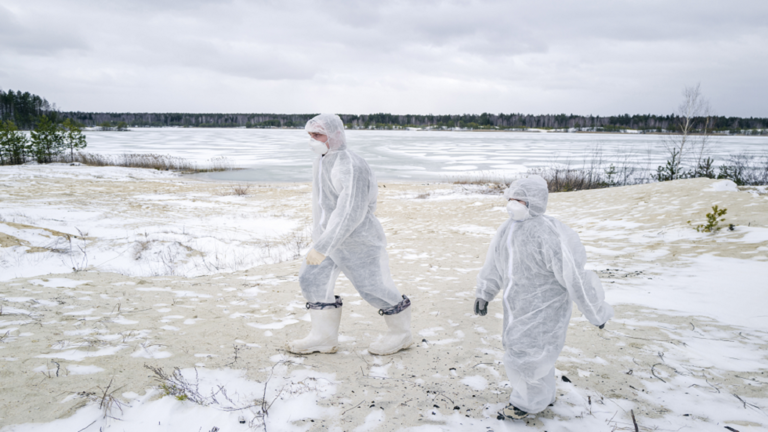Sci-fi and fantasy tales reveal deadly creatures emerging from the ice, wreaking havoc among human victims. This includes shape-shifting aliens in Antarctica, super parasites emerging from the melting woolly mammoth in Siberia, and exposed permafrost in Greenland leading to viral pandemics.
But how far remains this matter elusive? Can pathogens that were once common on Earth—but have remained frozen for thousands of years in glaciers, ice sheets, and permafrost—emerge from melting ice to disrupt modern ecosystems? The possibility is, in fact, entirely real.
#### Hidden Dangers Awaiting
In 2003, bacteria were revived from samples taken from the bottom of an ice core drilled in the Qinghai-Tibet ice sheet, with the ice at that depth being over 750,000 years old. In 2014, the giant "zombie" virus Pithovirus sibericum was revived from 30,000-year-old Siberian permafrost. In 2016, an outbreak of anthrax (a disease caused by the bacterium Bacillus anthracis) in western Siberia was attributed to the rapid thawing of anthrax spores in permafrost, killing thousands of reindeer and affecting dozens of people.
Recently, scientists found remarkable genetic concordance between viruses isolated from lake sediments in the Arctic and potential living hosts. The Earth's climate is warming at an astonishing rate, reaching speeds up to four times faster in colder regions like the Arctic. It is estimated that we can expect the release of 4 sextillion (4,000,000,000,000,000,000,000) microbial organisms from melting ice each year—this is the same estimated number of stars in the universe.
However, despite the incomprehensibly large number of microorganisms being released from melting ice (including pathogens that could infect modern species), no one has been able to estimate the risks this poses to modern ecosystems.
#### Digital Worlds
In a new study published in PLOS Computational Biology, researchers calculated that the environmental risks posed by the release of ancient viruses are unpredictable. The researchers used a program called Avida to simulate the release of a single type of ancient pathogen into modern biological communities. They then measured the impacts of this invasive pathogen on the diversity of modern host bacteria in thousands of simulations, comparing them to simulations where no invasion occurred.
Invasive pathogens often survived and evolved in these modern world simulations. About 3% of the time, the pathogen became dominant in the new environment, and in these cases, it was highly likely to lead to losses in modern host diversity. In the worst-case scenario (yet still entirely plausible), the invasion reduced the host community size by 30% compared to the control. While the danger from this small portion of pathogens may appear negligible, consider that these results stem from the release of just one pathogen in simulation environments. Given the vast number of ancient microbes being released in the real world, such outbreaks pose a significant risk.
#### Extinction and Disease
The findings suggest that this unpredictable threat, previously confined to science fiction, could become a powerful driver of environmental change. Although potential risks to humans have not been modeled, the fact that "time-traveling" pathogens could establish themselves and lead to severe declines in host communities is already concerning.
This highlights another potential source of species extinction in modern times—one that is not even included in our worst extinction models. As a society, we need to understand the possible risks to prepare for them. Notably, viruses like SARS-CoV-2, Ebola, and HIV likely transitioned to humans through contact with other animal hosts. Therefore, it is reasonable to suspect that an ice-related virus could also transfer to humans through a zoonotic pathway.
While the likelihood of a pathogen emerging from melting ice and causing catastrophic extinctions is low, the results indicate that this is no longer mere fantasy; instead, we should prepare for it.




